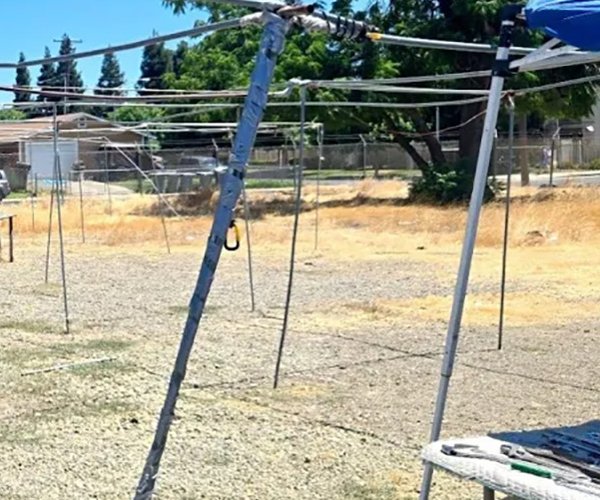The number of marijuana dispensaries operating in the unincorporated areas of Stanislaus County currently sits at 14, but that number will soon be cut in half following the Board of Supervisors’ approval Tuesday of a conservative strategy to allow the retail sale and cultivation of cannabis within county-governed areas.
“Honestly, I would never have imagined sitting at the staff table discussing cannabis as a legal industry in my lifetime, but…this is the reality and the legal landscape that we now must maneuver,” said Assistant Executive Officer Keith Boggs. “We’re here to propose a conservative allowance strategy; one that, if implemented, we believe will generate the revenue that is necessary to manage and administer a capped program while providing the necessary resources for law enforcement to thwart non-permitted activities.”
Entrepreneurs, doctors and lawyers packed into the basement chambers of Tenth Street Place for the board meeting, urging the supervisors to approve the strategy which would allow up to 61 cannabis activities permits in the unincorporated areas – seven dispensaries and 54 cultivation, nursery, manufacturer, testing, distribution or transporter permits.
Alexis Andrew Lopez, a combat veteran of the U.S. Army, told the Board that cannabis is a clean, healthy medicine which has helped the suicide epidemic that plagues soldiers returning home from war.
“Those are my brothers and sisters that I lose every day to mental illness…things that can’t be helped through regular medicine,” said Lopez.
Another U.S. Army veteran of 23 years addressed the Board, explaining how medicinal marijuana helped ease his post-traumatic stress disorder after serving overseas. After a year of use, the veteran went from taking 20 prescription medications per day to now taking none, he said.
Mark Gray, who owned a medical cannabis recommendation clinic in Modesto, employed nine doctors at his practice over the course of four years, helping ease the symptoms of cancer patients going through chemotherapy, patients suffering from epilepsy and other illnesses, he said. A cancer survivor himself, he added that cannabis kickstarted his appetite after he shrunk down to 135 pounds.
“The reason that all these people are here today is because everybody has been living in the shadows,” said Gray. “The shadows need to be taken aside…to say it’s not a medicine is ludicrous.”
Despite the fact that cannabis activities are currently prohibited in the unincorporated areas of Stanislaus County, there are at least 14 active marijuana dispensary storefronts and hundreds of grow sites throughout those areas, said Boggs. Under the new strategy, businesses operating illegally in the unincorporated areas will have a 15-day window, Oct. 2-20, to submit an application for a permit along with a non-refundable $4,359 deposit. Seven dispensaries will be selected by the County, while the other seven will have to shut down shop.
“There are apparently 14 storefronts in this county, but you’re going to give out seven licenses, which means you’re not going to give licenses to seven other dispensaries,” said Dr. Stephen Endsley of Modesto, who addressed the Board during the public comment. “What you’re saying is, ‘Your business is closed. You’re done.’ All of these people have families and children. It’s emotional.”
In order to choose the seven dispensaries permitted, the County will conduct interviews with each candidate and score them based on background investigations, plans for safety, security and parking.
Supervisor Dick Monteith argued that if dispensaries were operating illegally before the implementation of the new ordinance, why would they discontinue operation if their permit is not selected?
“It’s easy to pass a law, it’s easy to pass a policy, but it’s very difficult to implement it and put it into practice, and I think that’s one of the major concerns we have on this issue,” said Monteith. “Those who do not receive the permit, or the blessing, to be a distributor or to be a grower – you honestly believe they’re going to stop growing?”
Money generated from the new strategy – thanks to the application fee and a community benefit fee – is expected to fund enforcement to ensure the strategy is followed, said Boggs, with law enforcement expecting to answer complaints regarding outdoor cultivation and illegal grows. The community benefit fees are eight percent of gross sales for dispensaries, $5 to $10 per square foot for indoor cultivation and 2.5 percent of gross sales for testing facilities.
Monteith and Supervisors Terry Winthrow and Jim DeMartini all expressed their dismay at the fact that a cannabis cultivation strategy was even on the morning’s agenda, but in the end, it was only Monteith who voted “nay” on the item.
Under the approval, the strategy applies only in county-governed territory, while Turlock and the other eight cities in Stanislaus County will create their own cannabis policies.
“I am willing to support this today,” said Supervisor Kristin Olsen. “I think it’s the right thing for our community, I think it’s the right thing for public safety, I think it’s right for the users and the opponents as well. I think everybody will win by having a strong, robust, common sense ordinance in place.”
Following the strategy’s approval, a regulatory ordinance, zoning ordinance amendment, application process and fee schedule will be brought back to the Board of Supervisors for consideration and approval in December.








